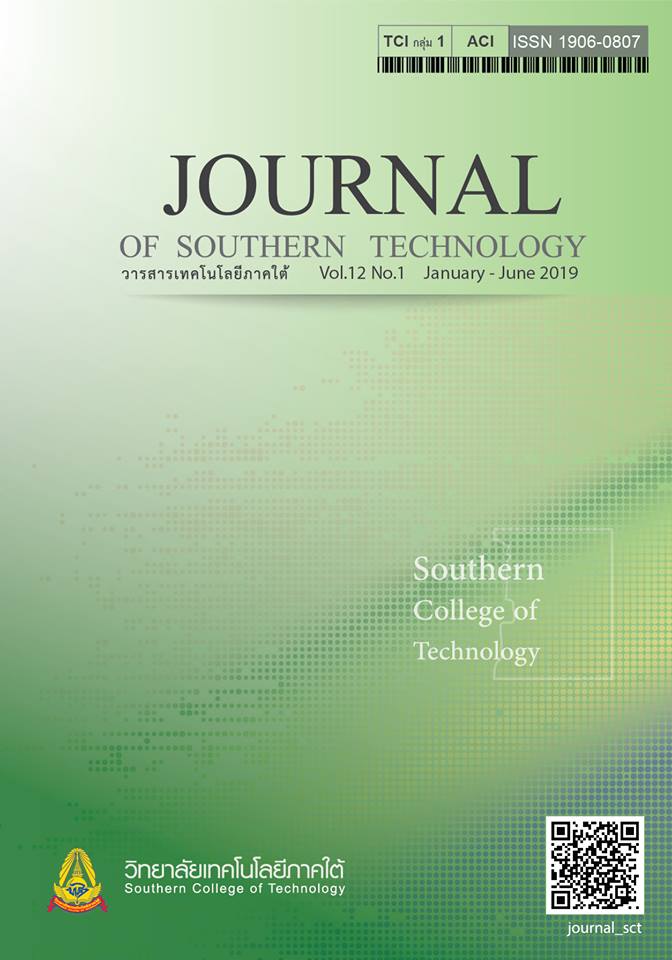Causal Relationship Model of Factors Affecting Upgrading Efficiency of Village and Urban Community Funds Management of Thung Song District, Nakhon Si Thammarat Province to Level A: Member’s Point of View
Main Article Content
Abstract
The purposes of this research were 1) to construct the causal relationship model of factors affecting upgrading efficiency of village and urban community funds management to Level A member’ s point of view 2) examining the goodness of fit model with the empirical data. And 3) to analyze effect size of the causal relationship model of factors affecting upgrading the efficiency of village and urban community funds management to level A. The samples were selected by Taro Yamane method which consisted of 400 members of village and urban community funds (level A). The instrument for data collection was a set of five-rating scale questionnaire, including Index of Item – Objective Congruence between 0.60 - 1.00, Index of Item – Total Correlation between 0.24 - 0.80 and reliability coefficient 0.91. The data collected were analyzed by package program and the LISREL programs version 8.80 for student was to analyze the data causal relationship model.
The research results indicated that: (1) The construct of the causal relationship model of factors affecting upgrading the efficiency of village and urban community funds management to level A consisted of 7 observed variables. (2) The causal relationship model of factors affecting upgrading the efficiency of village and urban community funds management to level A was well fitted with the empirical data. The final model developed showed that the fitness between the data and model indices were as follows: (c2/df) = 0.61, p-Value = 0.60, RMSEA = 0.00, GFI = 1.00, AGFI = 0.99, CFI = 1.00. All the factors in the model explain 87%. And (3) the most important factors had direct affected to upgrading the efficiency of village and urban community funds management to Level A were as follows: rule of fund (P = 0.42, R2 = 0.44) followed by process management (P = 0.26, R2 = 0.63) respectively.
The results of this study revealed that village and urban community funds level B, C and D should consider to upgrading the efficiency of village and urban community funds management to Level A
Article Details
-
Authors must agree to the journal publication rules and allow the editors to edit the manuscripts for publication.
-
Author’s right belongs to the author but Journal of Southern Technology holds the right of first publication and thus allow readers to use the article for the purpose of education but not commercial.
References
Carmines, E. G., & Zeller, R. A. (1990). Reliability and Validity Assessment (4 thed.). Newbury Park, California: Sage
Publications.
Cronbach, L. J. (1990). Essentials of Psychological Testing (3rded.). New York: Harper and Row.
Klaijanpong, H., Plangchareansri, K., Pungniran, B. (2015). Management model of effectiveness village fund region 7
(branch 12). Journal of Thai Interdisciplinary Research, 10(1), 102-113. [in Thai]
National Village and Urban Community Funds Office. (2016). Report of the allocation and transfer of the funds,
according to fund capital improvement village and urban community funds. Retrieved on 20 October 2016, from
https://www.villagefund.or.th/index.aspx?parent=433&pageid=469&directory=2366&pagename=content.
[in Thai]
Nilvichien, H. (1997). Development of Self Discipline, Practice and Principle. Pattani: Prince of Songkla University,
Pattani Campus. [in Thai]
Pomnoi, N. (2014). People and Village and Urban Fund Management. Thesis of Faculty of Public Administration,
Phitsanulok University. [in Thai]
Sengpracha, N. (1998). Human and Social (4 thed.). Bangkok: Odeon Store. [in Thai]
Wongsanti, N. (2016). The Direction and Development of the Country, the Government's Policy and National
Economics and Social Development Plan. 12. Bangkok: Office of the National Economics and Social Development. [in Thai]
Yamane, T. (1967). Taro Statistic: an Introductory Analysis. New York: Harper & Row.
